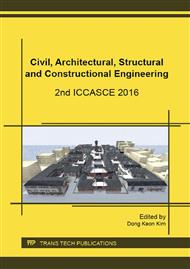p.255
p.262
p.267
p.273
p.278
p.282
p.287
p.294
p.300
Numerical Simulation Analysis of Cold Air Distribution System
Abstract:
This paper based on an actual project as an example, researching the application of cold air distribution system by using the numerical simulation method. By using Fluent software to establish a three-dimensional physical model, simplificate the physical model, establish proper tuyere model, choose the appropriate turbulence model, select the appropriate boundary conditions. Then simulate indoor airflow organization, get the distribution of temperature field, velocity field in the working area, and evaluate the comfort in the working area. Though the research, this paper provides the appropriate air distribution which is the upper supply air and on opposite side bottom exhaust air. This paper though the numerical simulation concludes that adopts the appropriate air distribution could meet the requirements of indoor thermal comfort.
Info:
Periodical:
Pages:
278-281
Citation:
Online since:
November 2016
Authors:
Keywords:
Price:
Сopyright:
© 2017 Trans Tech Publications Ltd. All Rights Reserved
Share:
Citation:


